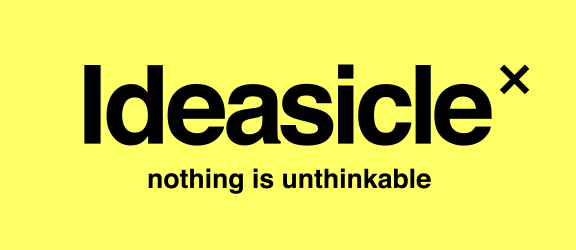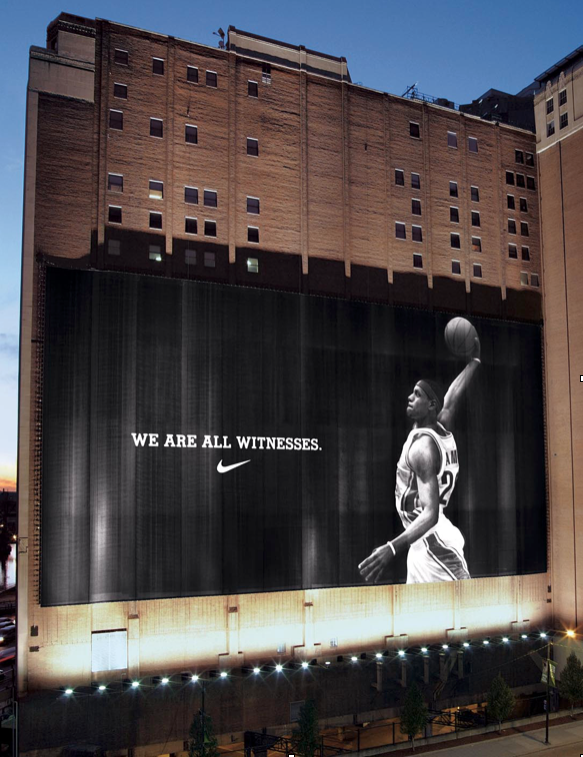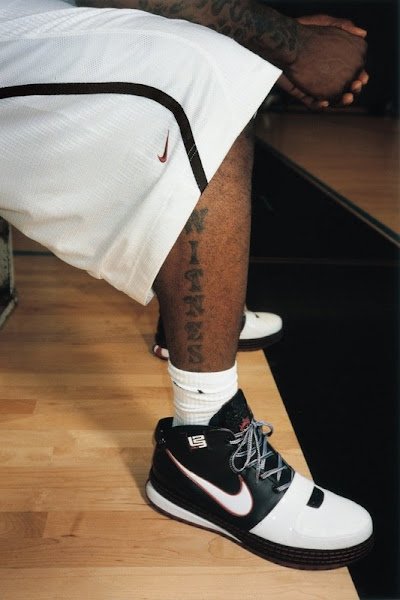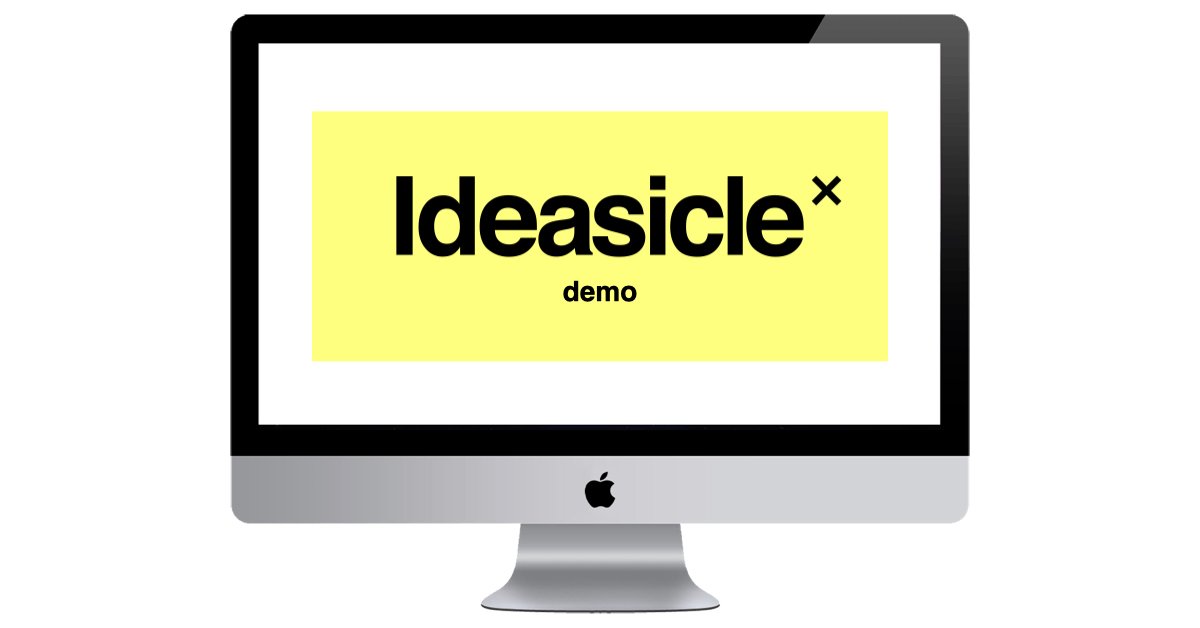Ideasicle Expert Profile: Scott Biniak And The Birth Of LeBron James' "We Are All Witnesses"
2005: Billboard in Cleveland, OH.
I have known Scott Biniak for nearly my entire career. We worked together at Wieden & Kennedy in the late 1990s on the Microsoft account. I remember being struck by his intelligence, passion, and enthusiasm for advertising and strategy. Since that time he went client side at Nike (among other places) and was the force behind LeBron James’ “We are all witnesses” brand idea. I say “brand idea,” but did you know that line started as an unfunded billboard in Cleveland, OH? I didn’t either.
Here is the incredible story behind that incredible line, as told by Ideasicle Expert, Scott Biniak.
Eighteen years after “We are all witnesses” was introduced on a single billboard in Cleveland, it has become LeBron’s career and franchise-defining tagline–his version of “Air Jordan.” That unexpected legacy is a testament to the impact that resilient and infectious ideas can have on a company’s marketing plans – if there’s a willingness to embrace them.
It’s surprising the line was ever written, because the project faced numerous and significant challenges from the beginning. Most importantly, it was an unplanned and unfunded project during an extremely busy period at Nike. So, all the work that was initially done on the project was a side hustle by just a couple of us.
When Andrea Fairchild, the mid-west marketing lead for Nike, called me, I was the advertising lead for Nike Basketball. She was excited about the possibility of a giant billboard across from the Cav’s arena. She also explained there would be some challenges. The frame for a billboard didn’t exist yet. It would have to be custom made, and more importantly, it would need to get a special exemption from the City of Cleveland – as billboards of that size were not allowed. She wanted to know what the Advertising team might have to post there. Her enthusiasm led me to ask, “What if we created content specifically for the space”? She agreed.
Despite the challenges, I was excited about how far we could push this opportunity. Since it wasn’t an official project, it didn’t have to align with any particular go-to-market launches, strategies or objectives.
Admittedly, that gave me some freedom when writing the brief, which I primarily based on the positioning statement I had previously authored for LeBron – centered around the idea that he would always be exceeding expectations on and off the court. The brief had one twist – a challenge to make this billboard in Cleveland a national monument for basketball by keeping it “alive” and filling it with meaning after it was unveiled. When we shared the brief with the cross-functional teams for Nike Basketball, it was still not an official project, and I don’t think anyone believed the challenge was achievable. Everyone wanted to see what Wieden & Kennedy would come back with creatively.
Once briefed, W&K came back quickly with the creative idea - a simple image on a black background of LeBron’s then signature dunk in his home uniform with the line Brian Ford penned - “We Are All Witnesses.” This was another pivotal moment. The brief had now been materialized into a creative idea that folks could react to, and the creative idea was perfect. So we combined the brief and the creative idea into a pitch deck and went around Nike rallying support in the hopes of making this an official project so we could get funding.
While we had an ad, it was still unclear how we would meet the challenge in the brief of keeping the billboard alive after it was posted.
As we shopped the idea around, there were still other barriers to getting the project officially approved. For example, we still didn’t know if the city would approve a billboard of this size. We also did not yet know how much it would cost to install a giant billboard frame on the building.
To get the city to commit, we mocked up the creative on an image of the building, hoping to get them as excited as we were. At the same time, W&K’s production team continued scoping and pricing the project. As part of that investigation, we learned that even if we did get city approval for the billboard, the city would also have to approve shutting down the basketball courts below in order for the work to be done safely.
Then the city let us know they loved the idea and were all in. To get around the billboard restrictions, the billboard would be given an arts permit. At the same time, support was growing internally at Nike. It now felt like the momentum was going to carry us home.
Then we hit two more barriers. The installation price and doubts about the creative. To install the frame and produce the actual OOH billboard itself (110 feet or 10 stories high by 212 feet wide), was going to cost the same a Tier One Nike TV commercial. It was no longer about freeing up some tactical funding, this was now in competition for its survival with the major campaigns that were already planned and had been in the works for year or more. At that point, I was told by my boss that the department would not have my back if I continued to pursue this project and it went sideways. More importantly, there were doubts within leadership that were raised – maybe this was too bold of a statement. LeBron had not yet made the playoffs. What if he didn’t make the playoff this year? What if he didn’t live up to the line?
To this day, I have no idea how the money thing got resolved, but it did. I believe Brian Fairben the Brand Marketing lead for Basketball and Andrea Fairchild were responsible for clearing that huge funding hurdle. Brian was known for saying “a good idea will never go unfunded,” and he played a big role in championing the project across the company.
Then LeBron was booed at a game on his home court by his home crowd. LeBron and the Nike team were really upset by that, and I used the incident to re-pitch the “Witness” billboard as the perfect response for LeBron to hold his head high and for us to remind Cleveland how lucky they were to have LeBron James on their team.
After several months of development, we now had the green light and the critical momentum we needed.
The billboard was completed on November 9, 2005, to coincide with LeBron’s home game against the Seattle Sonics. Rodney Knox, the PR lead on Nike Basketball, used his deep connections within the sports world to pitch ESPN on covering the billboard as part of the game. There were, of course no guarantees. However, when LeBron did the same dunk in the game that was on the billboard, ESPN was inspired to take it to another level – in the middle of the broadcast, they cut to the billboard outside and superimposed the in-game dunk over the billboard. LeBron did the dunk twice that game, so ESPN showed the board twice. They also referenced the line to talk about the amazing game LeBron was having, and that changed the way sportscasters talked about LeBron from then on. Sportscasters and writers continue to remind us that we are all “witnesses” to the amazing things LeBron is doing.
The local team also organized a media/community event dedicating the wall to the city along with a community donation of LBJ product. Beyond that, the team was still unsure how we would keep the billboard “alive” and relevant.
Headed into the All-Star Game on in February 2006, the team didn’t have any ideas on the table to keep the billboard alive, so the challenge came back to me. Armed with some key stats after talking with Nike Sports Marketing, I suggested that if LeBron wins MVP, we should we go back and project a series of ‘Youngest Ever” accomplishments over the billboard as headlines using “We’re All Witnesses” as the tagline. When LeBron was named MVP, that’s just what we did:
Youngest Ever . . .
. . . To go #1 in the draft
. . . To score 50 points in a game
. . . To lead his team in scoring
. . . To win Rookie of the Year
. . . To score 5,000 points
. . . To record a triple-double
. . . To win All-Star MVP
When LeBron carried his team to the playoffs that year, we handed out “Witness” T-shirts at the game. That’s probably when it clicked – when the broader Nike functional teams and agencies all realized they could run with the ball. After that, city, country, and geography teams started doing their own tactical extensions of the idea – adding new dimensions to “We are all witnesses” with each execution.
By this time Lebron had Tattooed “Witness” on his leg.
The next year, both the US and China ran a “We are all Witnesses” TV spot as James led his team to the playoffs again. Now the single OOH board had become an ongoing global campaign with localized executions.
After that, it wasn’t uncommon for a Witness T-shirt to appear in other Nike ad campaigns – including on LeBron in the much-loved Kobe and LeBron puppets campaign.
An even bigger testament to the power of the idea . . . the product teams integrated the line into LeBron’s franchise product. It’s been used on apparel, his in-line signature shoes, limited edition and commemorative product drops. There is even a line of LeBron Witness shoes – the most recent version being LeBron Witness 7.
Over all this time, the stickiness of the strategic and creative direction has proven to be as infectious for the folks who originated the work, the folks that are continuing to keep it going, and the consumers and fans who have been inspired by it and adopted it as their own. Each execution and campaign iteration continues to build value in new ways to the line, the athlete, the franchise and the Nike brand.
There’s no doubt at this point that the line can hold whatever LeBron could possibly accomplish. He did after all just become the all-time leading scorer in NBA history. The only test of the idea’s potency that’s left is whether it will last after LeBron has retired—when his unexpected and ongoing accomplishments will continue to happen off the court.
I love stories like this one. It’s the traditional cinematic “hero” storyline, where a guy and his team has an idea, believes in the idea, pushes it, gets smacked down, but keeps pushing, only to see massive success when the world finally sees that he was right all along.
Scott Biniak represents the level of accomplished talent you can expect at Ideasicle X. People you can recruit to work on your idea projects. Try it.
And then you’ll be the witness.
ABOUT THE AUTHOR.
Will Burns is an advertising veteran from such agencies as Wieden & Kennedy, Goodby Silverstein, Arnold Worldwide, and Mullen. He was a Forbes Contributor for nine years writing about creativity in modern branding. And he is currently the Founder & CEO of the revolutionary virtual-idea-generating company, Ideasicle X. Sign up for the Ideasicle Newsletter and never miss a post.






